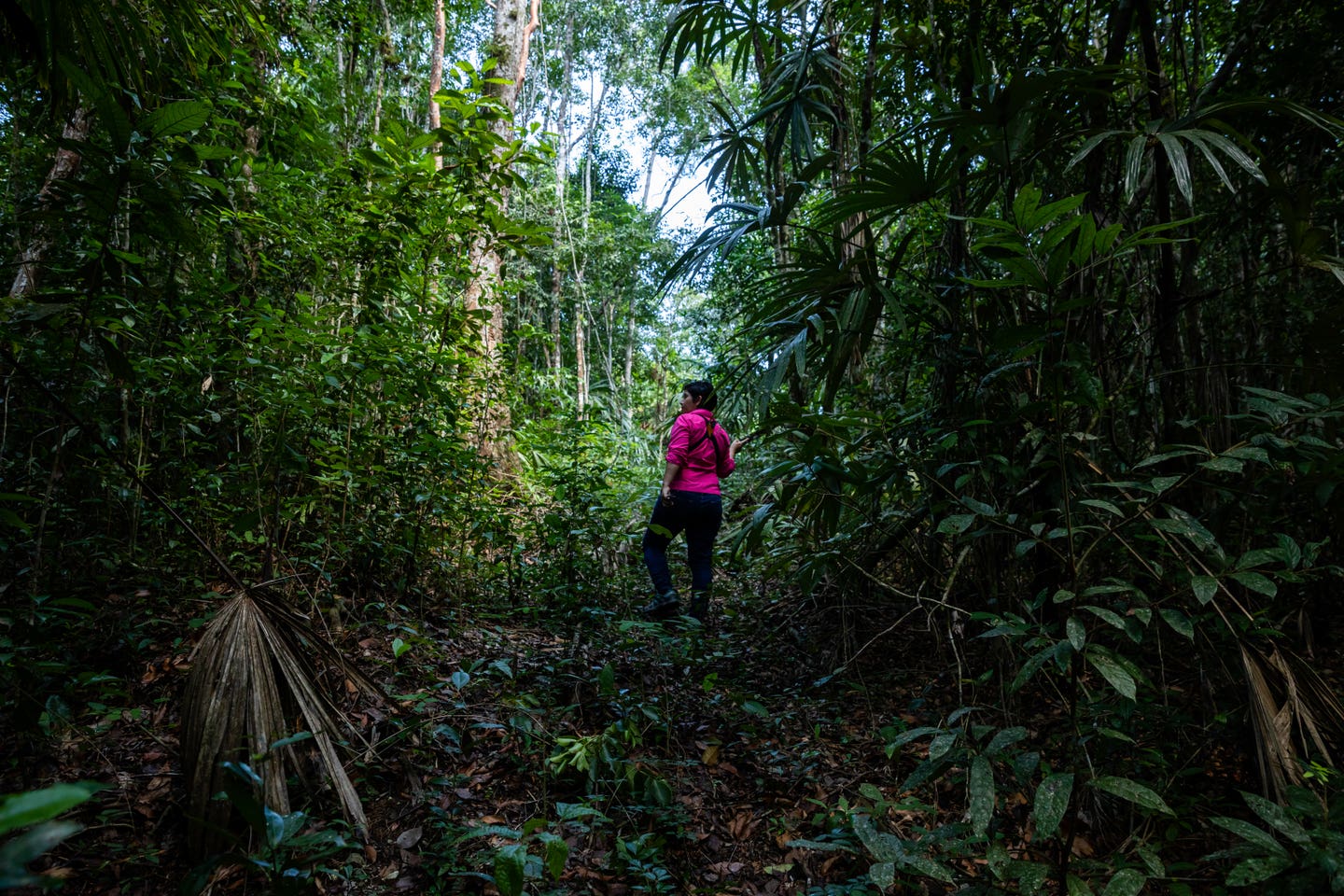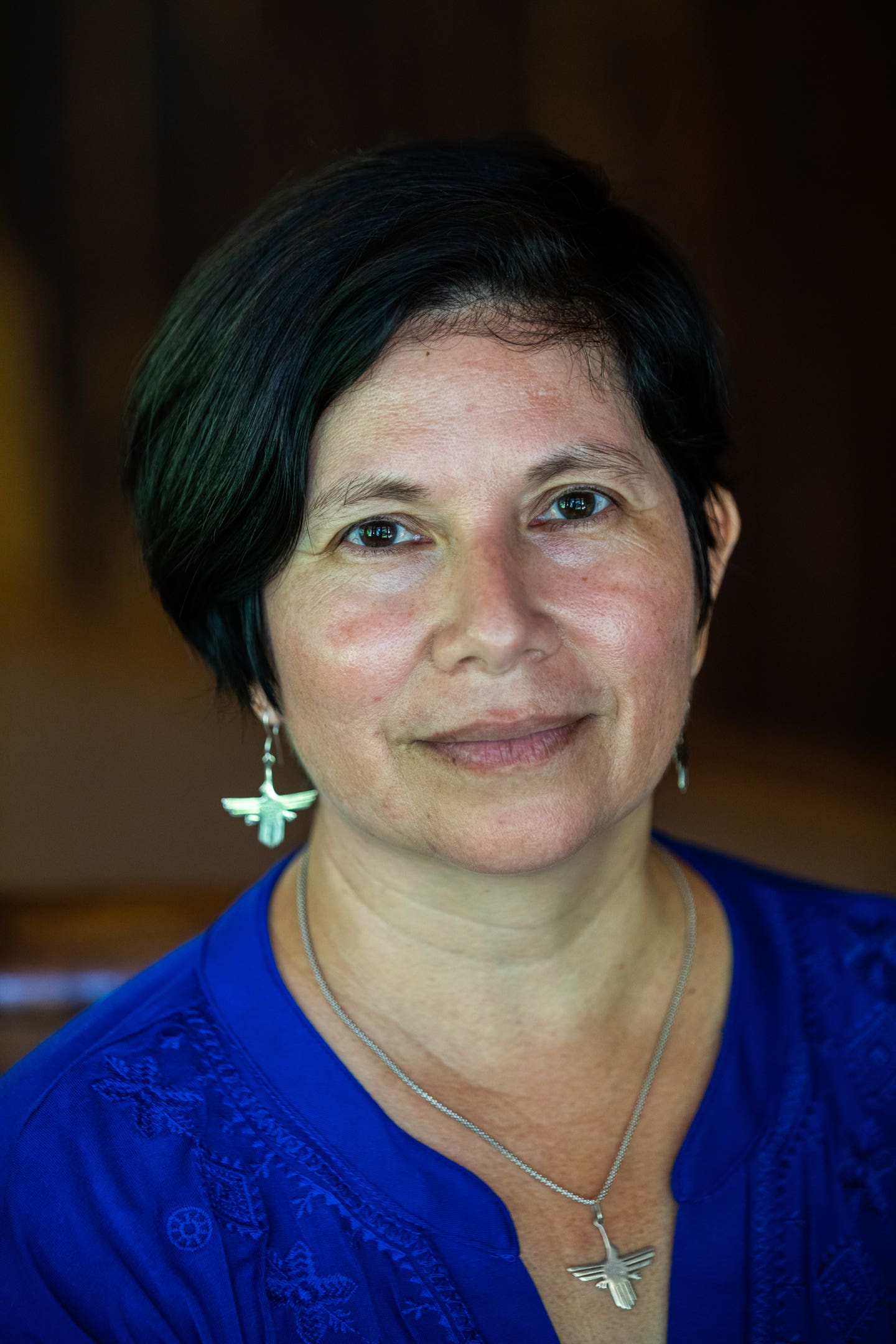Education
Ph.D. Biology, St. Louis University
Science is a very important part of the puzzle, but there’s also the people dimension which you can’t always predict using science. Conservation is that nexus where we use science to inform our decision making but always in the context of trying to understand the relationships and what it is that we’re doing for people.
Elma Kay grew up surrounded by lush green forest at the family home her parents built near a lagoon that linked out to the sea in rural Corozal, Belize. “We were always playing outdoors and looking for animals and trying to figure out what we could eat from the bush. That ecosystem is a part of what I grew up exploring—it was a very outdoorsy life and childhood.” Though her grandparents were sailors and seafarers, her parents’ generation had access to ever-expanding roads, and their connection to the sea was lost.
She had to leave home to attend high school because the village she lived in, Progreso, only offered primary school. Every Monday, Elma and her sister took a bus about an hour to the school, staying with friends and family members and returning on Fridays. If the bus wasn’t running, they would catch a ride on a sugarcane truck. If the weather was bad, they may not be able to return home for the weekend. In the second year, she had to choose a path to study. “In my mind, I was sure that I was going to do science. I had no doubt.” And she did. She graduated—one of six women in a class of approximately 30 students—who chose science.
Elma received a scholarship to St. John’s Junior College in Belize City, and then one to Saint Louis University (where she got to explore the Ozarks and its flora), moving further and further from home. Yet, her academic career was taking off and she soon found herself with a double major in biology and chemistry, and bound for graduate work pursuing a masters in molecular biology. “However, as much as I loved working in a lab, I really wanted to be outdoors,” she said. During summer visits back in Belize, she volunteered with friends working with the forestry department. As she pursued her PhD, she did her fieldwork throughout the Caribbean, in Jamaica, Puerto Rico, the Dominican Republic, and Cuba. “It wasn’t Belize, but it was pretty close,” she said, noting that Jamaica shares a lot culturally and ecologically with Belize. Soon after finishing her master's, she met Sharon Matola, an American woman who launched the Belize Zoo and Tropical Education Center. Through this relationship, Elma started a botanical collection at the Zoo.
The goal was always to come home. “A big reason I went to school was to return and work at home,” Elma said. Though she had doubts early in her education that she could never do the things she was doing abroad back home in Belize, Elma grew in her experience and confidence that she could apply what she’d learned to her home country. Her homecoming coincided with the first-ever national protected area system plan adopted by Belize. The Environmental Research Institute she co-founded at the University of Belize was designed to fill the science gaps that that plan required, including monitoring and information. “In all those years of working to build that capacity for science, I also realized how much of it has everything to do with people, and little with science.”
All of these experiences have led Elma and colleagues to create the Maya Forest Corridor Trust, a Belizean non-profit that is the trustee for newly purchased lands in the Maya Forest Corridor that were the most threatened by massive clear-cutting. The Maya Forest Corridor is a stretch of forest that allows animals to move across their full range in search of habitat, food and breeding opportunities. This corridor ensures the survival of many wildlife species, including jaguars, tapirs, river turtles, pumas and pig-like peccaries, which have disappeared across 87 percent of their range in Mesoamerica. Re:wild is the biggest partner in this land purchase effort that must continue for the full corridor connection to be completed. “There are projects that are easy to do and can be done and those that are hard, but we must do. The corridor is one we must do even if it takes us another decade, not just for Belize but for the region, and we still need all the support we can get,” Elma said.
“Healthy wildlife populations are a critical part of our economy, culture and history in Belize,” Elma said. When completed, the corridor will consolidate Belize’s protected areas system, just as its existence in many ways represents the consolidation of so much of Elma’s professional and personal experiences.
Elma Kay is currently the Managing Director of the Belize Maya Forest Corridor Trust that stewards 236,000 acres of forest recently protected by TNC and partners northwest of the Maya Forest Corridor.
All photos ©Eva Lepiz/Courtesy TNC
Wild Facts
Elma Kay has been part of a decade-long effort to establish and permanently protect the Maya Forest Corridor.
Without the Maya Forest Corridor, jaguars would go extinct in the southern half of the Maya Forest within 50 years.
Elma Kay co-founded the University of Belize Environmental Research Institute.

